Different Engine Hoist Types and What They Are Used For?
Engine hoist is a tool that is used to lift heavy objects. There are different situations and places, where hoist is required for lifting, so there are also different hoists that can do that job. Three most common types of hoists for this task are hydraulic, electric and chain hoists. For engine lifting the most popular type of hoist is hydraulic hoist. For lifting other objects, like boxes in stores, for woodworks and construction works, more popular are electric and chain hoists. What they all have in common is that they all can be used for car works to lift an engine. Each hoist has their own advantages and disadvantages and each is better suited for different jobs. Now, let’s look at each engine hoist specifics in more details.
Hydraulic hoist
Hydraulic hoist is most used hoist for car repairs and engine lifting. These engine hoists works with hydraulic cylinders. Hydraulic cylinder uses liquid fluid for lifting job. This hydraulic fluid often called hydraulic liquid is usually special oil. Hydraulic systems can be found in different mechanics. For example, one of the most common hydraulic systems is car brakes. Cars uses hydraulic braking system as it is fast, precise, powerful and reliable and can stop car from high speeds. Hydraulic systems are also used in different factory equipment and robots that are responsible for lifting extremely heavy loads.
You will also find hydraulic systems in car service stations. These systems are called car hoists. The purpose of this system or tool is to lift up a car so mechanic can make the necessary repairs. In opposite to engine hoists, car hoists can be operated automatically, so practically no manual work needs to be applied to work with this tool. Car hoists usually come with a special remote control, which allows operating the hoist.
Another tool you will find in most car service stations is hydraulic engine hoist. Engine hoist or engine lifter is responsible for lifting engine out of the car. Hydraulic engine hoist works with the same principle as other hydraulic systems. It has got a hydraulic cylinder in middle of the hoist, which can lift up heavy loads. Engine gets attached to the boom and can be lifted by adding more pressure in the hydraulic cylinder. This process is done by a person, which is pumping a special winch that is attached to the base of the cylinder. This process increases oil pressure into the cylinder and that force is able to lift up engine hoists boom with load that is attached to it. Process of fully lifting up an engine out of the engine compartment can take up pretty long time, so hydraulic engine hoist is not considered to be the fastest tool for engine lifting. But hydraulic engine hoists have one huge advantage. Hydraulic systems are capable of lifting very heavy loads, and so are hydraulic engine hoists. These tools usually come with maximum lift capacity from 1 ton (2000 lb) to 4 tons (8000 lb), and even up to 8 tons (16000 lb). Such high lifting capacities allows lifting practically any engine out of the car. To lower the load, person working with hoist needs to turn a special bleed valve that is located on the hoist. This decreases pressure into the cylinder and lowers boom and load. Lowering process is much faster than lifting process, so it must be done with extra caution. Hydraulic engine hoist can take a lot of space in garage, so most of today’s engine lifters are made foldable and they can be folded in more compact size for storage.
Electric hoist
Electric hoist is another popular tool used for lifting heavy loads. Electric hoist may not be that popular for lifting engines, as it is for lifting other type of objects. These hoists are especially popular in such places as sawmills, shops and different factories. They are also used in car service stations for lifting and transporting heavier loads that are too heavy to be carried by human. Electric hoist in opposite to hydraulic or chain hoist can work fully automatically, so no manual force needs to be applied. Electric hoist operator has to control the hoist with a remote control, in opposite to hydraulic hoist, where operator needs to pump the winch in order to lift up hoists boom, or to chain hoist, where operator needs to pull down the chain to lift up a load.
Electric hoists are great in places, where loads below 225 kg (500 lb) weight needs to be lifted, because they are much faster and easier to use than hydraulic hoists. However, they are not that good with heavier loads. And this also applies to engine lifting. Larger engines can weight over 225 kg (500 lb), so you will need a more powerful electric hoist and they cost a lot more than hydraulic hoist with same maximum load capacity. Another disadvantage of electric hoist is that they need a special place to be installed. You can place a hydraulic hoist practically anywhere on the ground, unless the surface is solid. Electric hoist needs to be placed above the ground. This usually means mounting it to ceiling or building a special scaffolding to install an electric hoist. This also means that without special scaffolding, electric hoists cannot be used outdoors. Also, electric hoist will be static and cannot be moved around (without special installations), so you will always have to place a reparable car in the same place. Hydraulic hoist can be moved around the workshop or garage, so car doesn’t have to be placed in a certain place each time. Another disadvantage of electric hoist is that it needs an electric power source in order to work. Hydraulic or chain engine hoists need to be operated manually, while electric hoist has got an electrical motor that works with an electrical power.
All in all, electric hoist is fast and convenient tool to use for lifting moderately heavy loads, but becomes much more expensive, if you need to lift loads heavier than 225 kg (500 lb).
Chain hoist
Chain hoist, similar to hydraulic and electric hoist, is a tool that is used for lifting heavy loads. Chain hoists are pretty similar to electric hoists, but instead of working automatically with electric engine, chain hoist needs to be operated manually. There is no remote control, person operating the hoist needs to pull the hand chain in order to lift up the load. Chain hoists are widely used in stores and shopping malls for lifting store equipment, in different workshops and factories for lifting heavy parts and also in car service stations for lifting engines, transmissions, gearboxes and body parts.
Chain hoist is the simplest of hoists and the mechanism behind this hoist is very basic. A Chain hoist consists of hand chain, lifting chain with a hook and lifting mechanism, which consists of axle, cog and sprockets. To lift a load hoist operator needs to pull the hand chain. This process moves the cog and smaller sprocket in the lifting mechanism. Smaller sprocket moves the whole axle, which is moving the larger sprocket. Smaller sprocket moves faster and less force needs to be applied to move this sprocket. Larger sprocket moves much slower, so the lifting of load is also very slow. In summary, person operating the hoist pulls hand chain, which rotates smaller sprocket that is attached to axle. This axle rotates larger sprocket, where lifting chain is attached. Lifting chain has load attached on the hook, so when hoist operator pulls the hand chain, load gets slowly lifted. This lifting process is slower than electric hoists or hydraulic hoists, however, chain hoists are capable of lifting quite heavy engines.
Disadvantage of chain hoist is previously mentioned slow lifting pace and limited places, where chain hoist can be installed, same as with electric hoist. Chain hoist needs to be attached above the ground, on ceiling mount or specially made scaffold. But in opposite to electric hoist, chain hoist does not need electricity or any other additional resources to work. From the plus side, chain hoist is very simple and cheap tool. It is much cheaper than electric hoist and even cheaper than hydraulic hoist. Chain hoist with maximum lift capacity of 2 ton (4000 lb), which is average lift capacity of hydraulic hoist, will cost just approx. 100 dollars. Because of their cheap price and ease of use, chain hoists are very popular in different work places like construction sites, sawmills and also in factories, but because of their limited movement, chain hoists are not that much used in car workshops as engine hoists. But if you have a place in your workshop or garage to install a chain hoist, it will be able to do the job of lifting an engine and will cost you less than electric or hydraulic hoist.
However, usually after lifting engine out of the car, it needs to be moved away from the car and stored in an engine stand for repairs, so you may need additional installation to be able to move chain hoist with load from one place to another, and the overall costs of building such system can be much larger than buying a movable hydraulic engine hoist.
At the end, you have to look at what best suits your needs and area, where you will be using the hoist. If you want a fast hoist and need to lift engines with smaller weight, have an appropriate place for installing an electric hoist and price is not a concern, then electric hoist will be the best lifter. If you want a similar hoist to electric, but do not want to spend a lot of money for good electric hoist, and want something more basic, go for the chain hoist. But if you want a more universal tool that can be moved around and does not need to be installed in one place, that can lift heavy loads, does not cost as much as electric hoist and is specially made for engine lifting and car repairs, then hydraulic engine hoists will be the best of these tools.
- Floor Jack Storage Ideas and Tips - November 19, 2019
- Tips for Using a Car Jack - November 12, 2019
- How Often Should You Wash Your Car in the Winter? - November 5, 2019
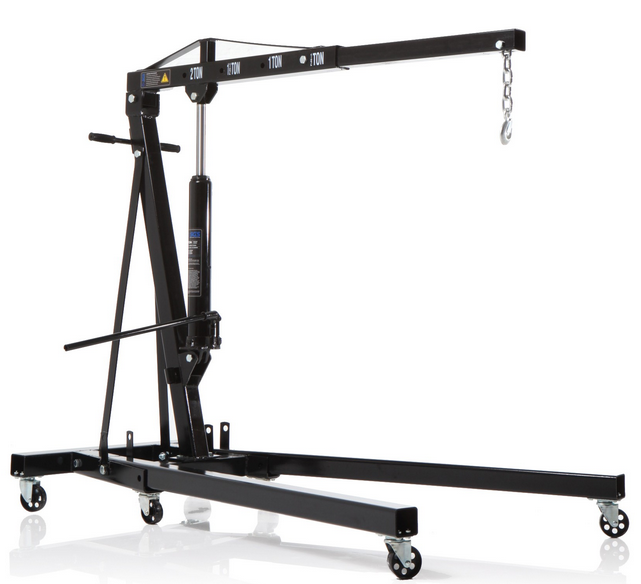
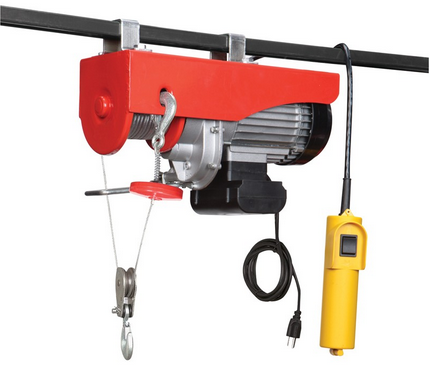
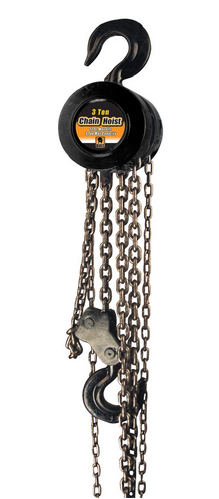
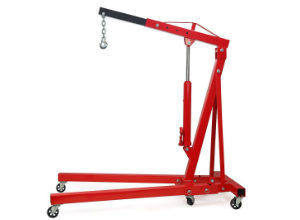
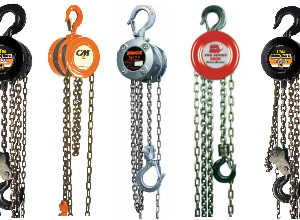
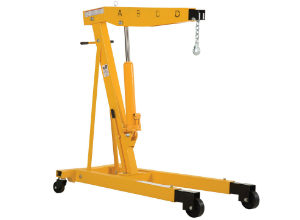
hi,
I’m a student and I want realize for my Graded Unit a 3D model of the electric Hoist (225kg). I tried to find technical drawings on the web but I couldn’t and find them looks very hard. Can you suggest me where I can find technical drawings of internal mechanics of electric hoist ?
thanks
Quite a few different drawings come up when you Google “Electric Hoist Technical Drawings”. Unfortunately, I can’t help you more if I don’t know the exact hoist model you are talking about